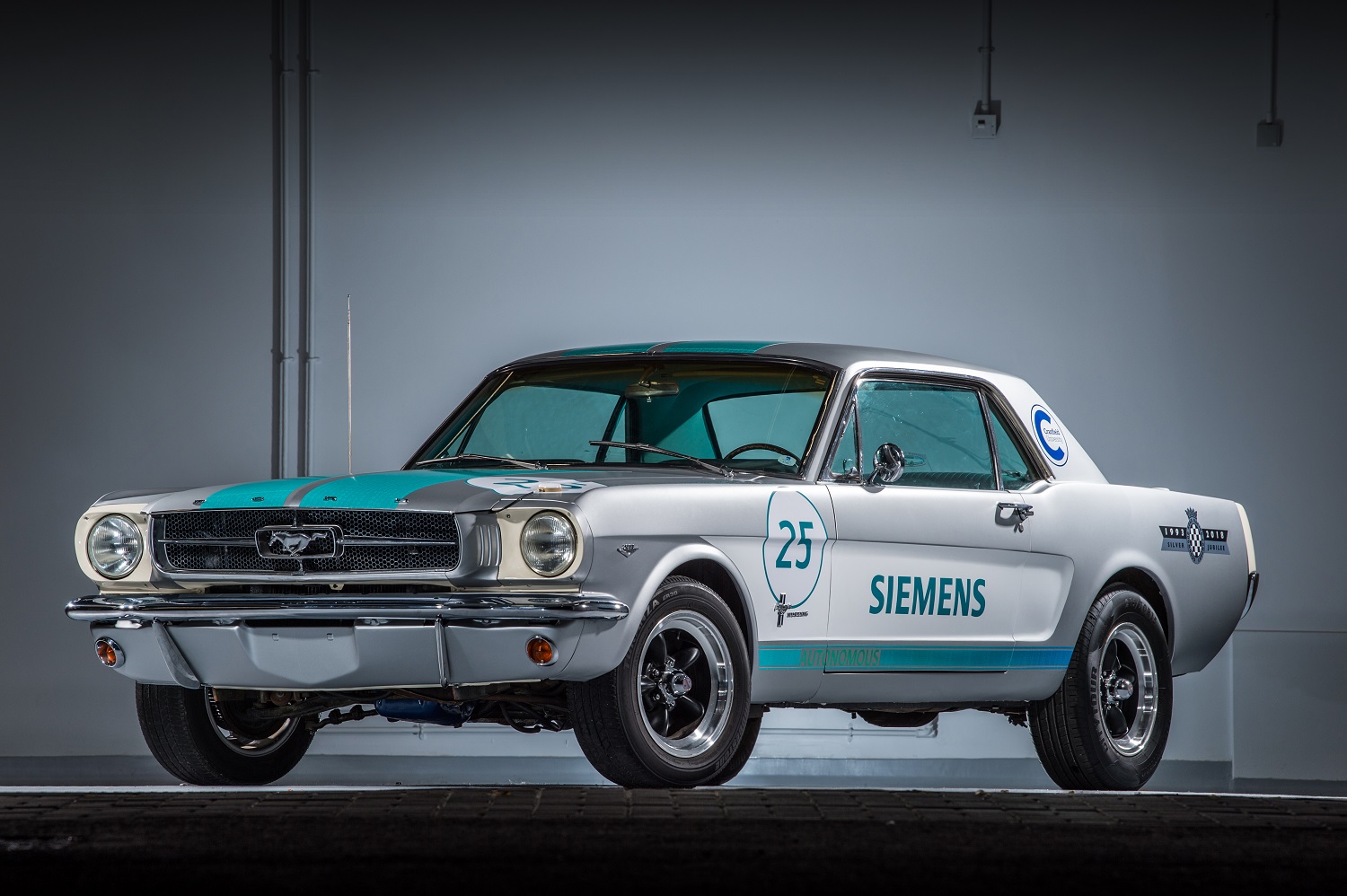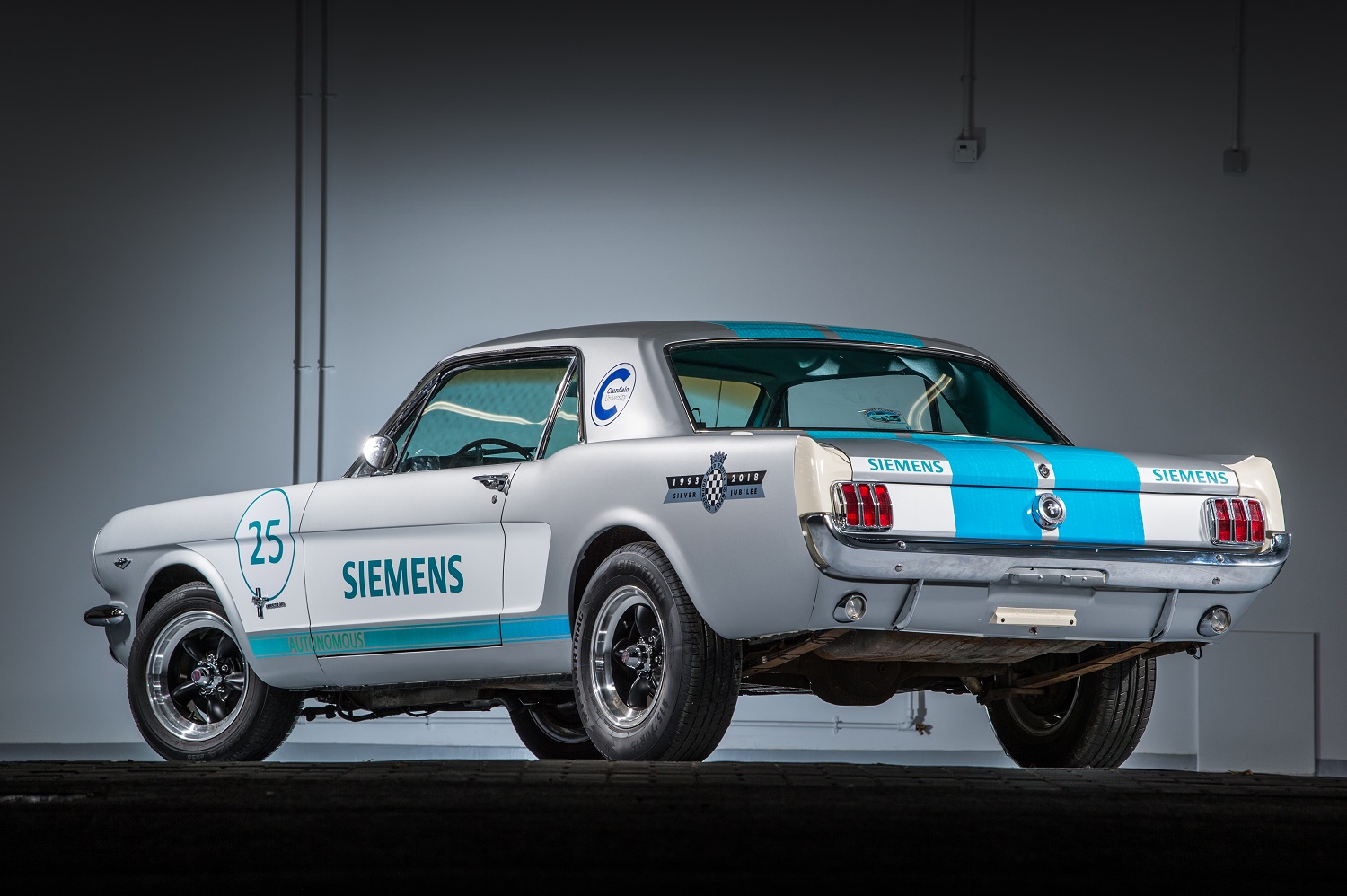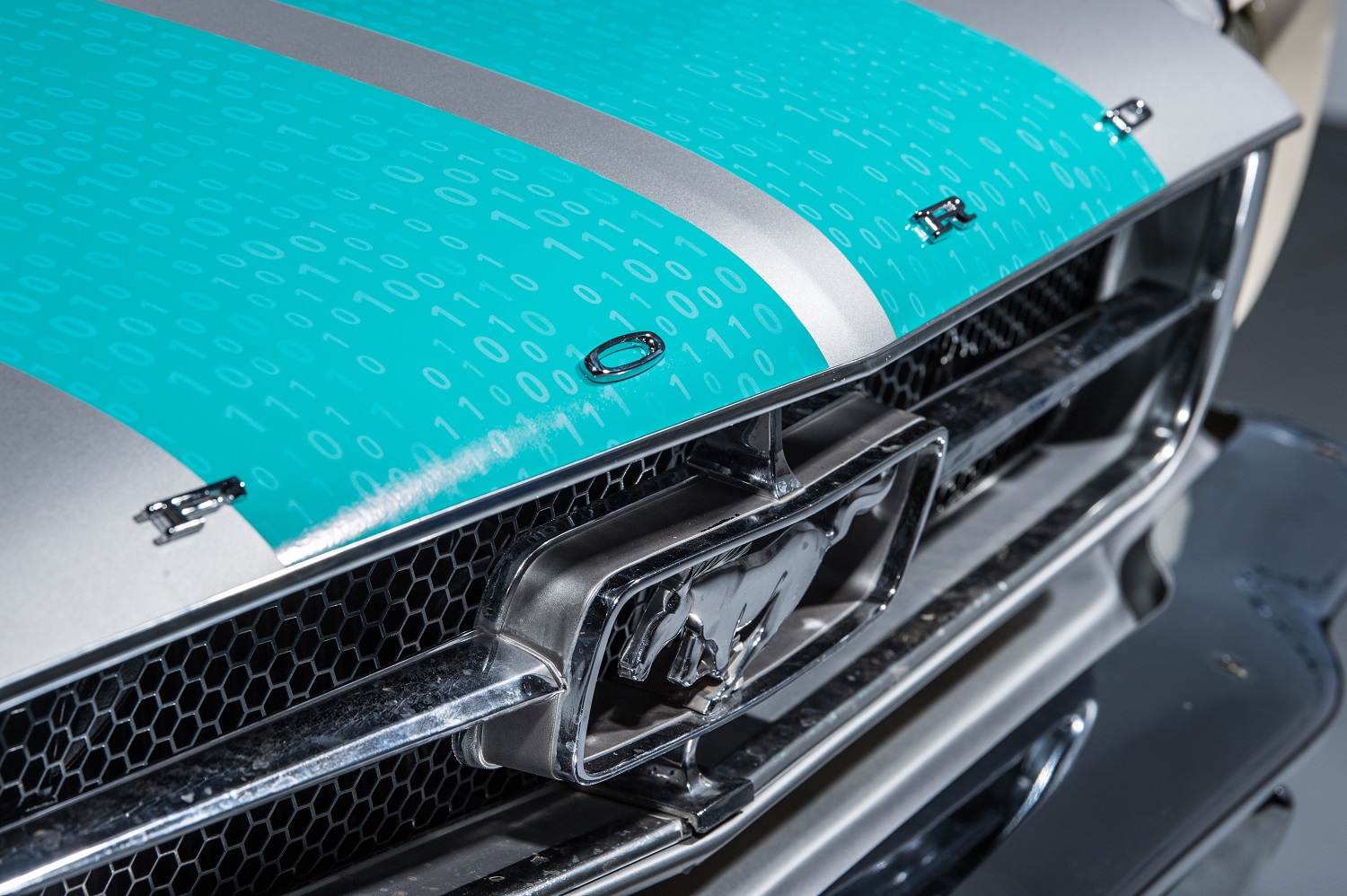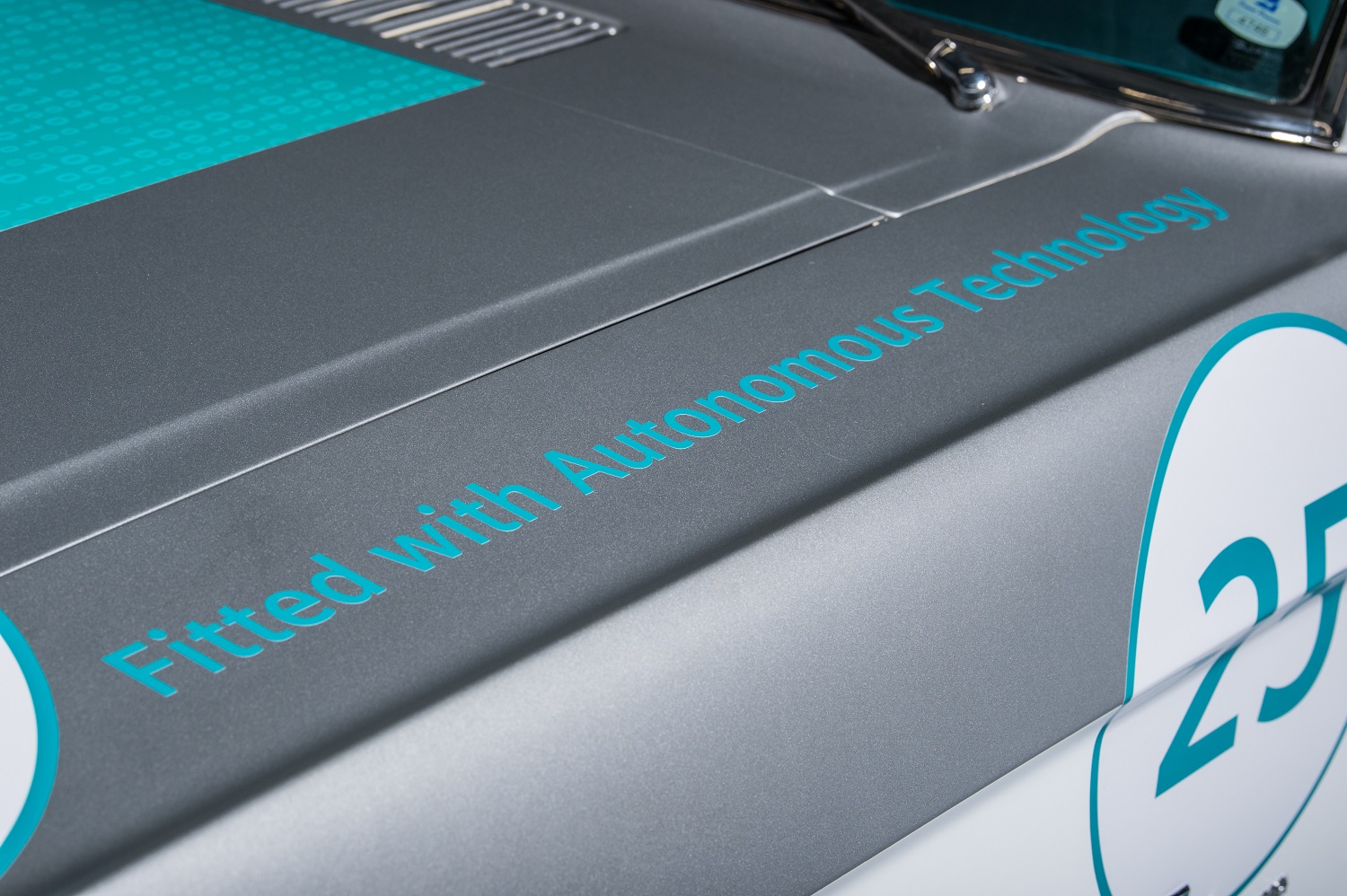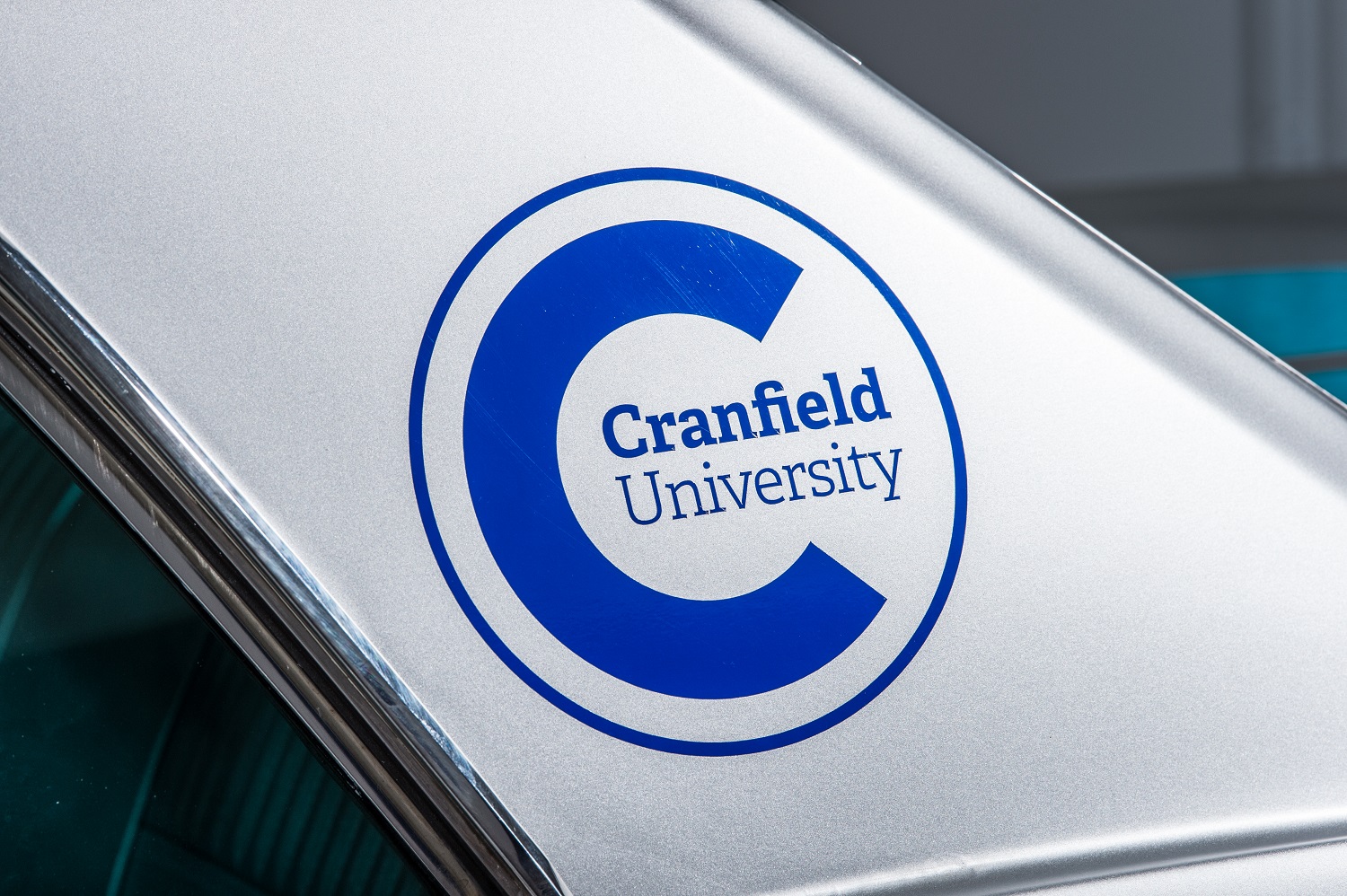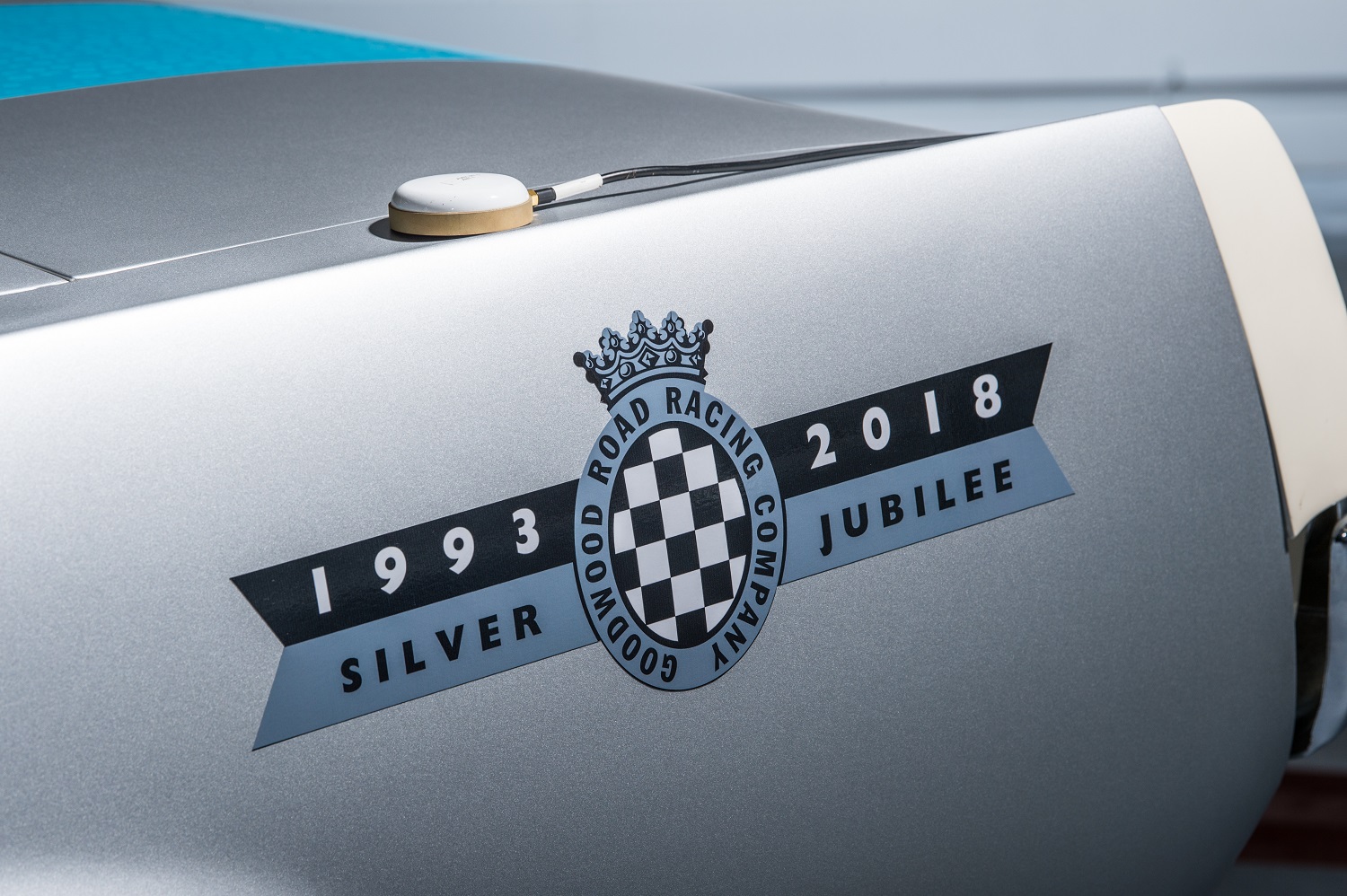Siemens staged an unlikely (and unprecedented) marriage between classic cars and autonomous cars at this year’s Goodwood Festival of Speed. It sent a custom-built 1965 Ford Mustang retrofitted with a full suite of autonomous technology to compete in the annual event’s famous hill climb. The prototype’s first run didn’t go as planned due to a mechanical problem but it performed a little better during subsequent attempts.
Footage showing the Mustang’s first autonomous run up the hill reveals it wasn’t ready for prime time yet. The prototype set off at a glacial pace with four passengers on board and immediately started zigzagging across the track like a ping-pong ball. The safety driver behind the wheel took control of the car several times during the run to prevent it from veering into the hay bales on either side of the track. Siemens blamed the incident on a power steering failure, not on its autonomous technology, and promised to repair the Mustang before the end of the festival.
“Unfortunately, the power steering went during [the] afternoon hill climb – purely a mechanical issue rather than an autonomous, tech-related one. These things are inevitable when trying something as brave as this – particularly as the car is 53 years old,” a spokesperson told Digital Trends via email. Video footage of a later run shows the car still struggles to stay in the middle of the track and requires at least some human input to stay away from the hay bales.
The German firm explains that it designed the Mustang with the help of Cranfield University, a science and engineering school in England. Though Siemens hasn’t detailed the precise type of hardware and software it installed in the Mustang, it notes that it used location scanning technology provided by Bentley Systems to create a 3D scan of the track and load it into the car’s onboard computer. In other words, the Mustang doesn’t scan the road ahead; it knows where it’s going ahead of time because it simply needs to follow preprogrammed instructions — at least in theory.
This important distinction explains why the car looks largely stock. Most autonomous prototypes (like the ones built by Waymo and Uber) are festooned with bulky radars, cameras, and sensors that scan what’s ahead, analyze the data, and react appropriately. In contrast, the Goodwood Mustang only stands out from a regular-production model with small, beer coaster-sized sensors on the hood and on the trunk lid.
Though we don’t have technical details, the chromed 289 emblems on the front fenders suggest the Mustang uses a carbureted 4.7-liter V8 engine. It makes either 200, 225, or 271 horsepower depending on its state of tune — Ford offered all three in 1965. It presumably shifts through the optional three-speed Cruise-O-Matic automatic transmission, which was only available with the first two variants of the eight-cylinder. But considering the Mustang is now autonomous, nothing guarantees Siemens retained the period-correct engine and transmission combination.
Siemens’ autonomous Mustang will waft up the Goodwood hill twice a day through July 15. Cameras inside and out will stream each run to screens scattered across the vast outdoors event.
In recent years, the hill climb has morphed into a stage where companies from all over the automotive spectrum strut their stuff. Spectators can check out a dizzying array of machines including the Volkswagen I.D. R that recently set a new record at the Pikes Peak International Hill Climb, the record-setting Porsche 919 Evo, classic Formula One cars, and regular-production models.
Update: Added news of the prototype’s second attempt.
